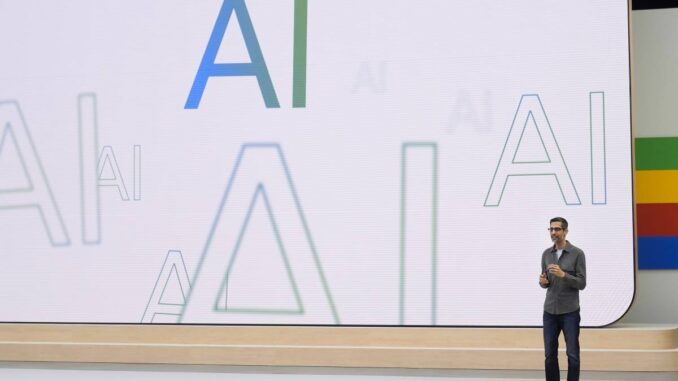
SAN FRANCISCO, California — Google is injecting its search engine with more artificial intelligence (AI) that will enable people to voice questions about images and occasionally organize an entire page of results, despite the technology’s past misadventures with misleading information.
The latest changes announced on Thursday herald the next step in an AI-driven makeover that Google launched in mid-May when it began responding to some queries with summaries written by the technology at the top of its influential results page. Those summaries, dubbed “AI Overviews,” raised fears among publishers that fewer people would click on search links to their websites and undercut the traffic needed to sell digital ads that help finance their operations.
Google is addressing some of those ongoing worries by inserting even more links to other websites within the AI Overviews, which already have been reducing the visits to general news publishers such as The New York Times and technology review specialists such as TomsGuide.com, according to an analysis released last month by search traffic specialist BrightEdge.
The same study found the citations within AI Overviews are driving more traffic to highly specialized sites such as Bloomberg.com and the National Institute of Health.
Google’s decision to pump even more AI into the search engine that remains the crown jewel of its $2-trillion empire leaves little doubt that the Mountain View, California, company is tethering its future to a technology propelling the biggest industry shift since Apple unveiled the first iPhone 17 years ago.
The next phase of Google’s AI evolution builds upon its seven-year-old Lens feature that processes queries about objects in a picture. The Lens option is now generating more than 20 billion queries per month and is particularly popular among users from 18 to 24 years old. That’s a younger demographic that Google is trying to cultivate as it faces competition from AI alternatives powered by ChatGPT and Perplexity that are positioning themselves as answer engines.
Now, people will be able to use Lens to ask a question in English about something they are viewing through a camera lens — as if they were talking about it with a friend — and get search results. Users signed up for tests of the new voice-activated search features in Google Labs will also be able to take video of moving objects, such as fish swimming around aquariums, while posing a conversational question and be presented an answer through an AI Overview.
“The whole goal is can we make search simpler to use for people, more effortless to use and make it more available so people can search any way, anywhere they are,” said Rajan Patel, Google’s vice president of search engineering and a co-founder of the Lens feature.
Although advances in AI offer the potential of making search more convenient, the technology also sometimes spits out bad information — a risk that threatens to damage the credibility of Google’s search engine if the inaccuracies become too frequent. Google has already had some embarrassing episodes with its AI Overviews, including advising people to put glue on pizza and to eat rocks. The company blamed those missteps on data voids and online troublemakers deliberately trying to steer its AI technology in the wrong direction.
Google is now so confident that it has fixed some of its AI’s blind spots that it will rely on the technology to decide what types of information to feature on the results page. Despite its previous bad culinary advice about pizza and rocks, AI will initially be used for the presentation of the results for queries in English about recipes and meal ideas entered on mobile devices. The AI-organized results are supposed to be broken down into different groups of clusters consisting of photos, videos and articles about the subject.


Be the first to comment